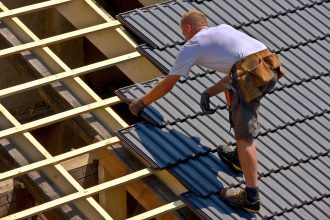Factors Influencing the Price of Fiberglass Sheets
The price of fiberglass sheets varies depending on several factors, including grade, thickness, size, type of fiberglass used, and specific applications like cable ladder systems or chopped strand mat (CSM) sheets. Understanding the pricing structure is essential for choosing the right material that fits both your project requirements and budget. Here’s a breakdown of the key elements that influence the cost of fiberglass sheets:
Grade and Material Type
Fiberglass sheets come in a range of grades, such as G10, FR4, and G11, each designed for specific applications. Higher-grade materials with enhanced properties like heat resistance or electrical insulation typically come at a higher cost. For instance, G11 sheets, which are designed for high-temperature environments, are generally more expensive than standard G10 or FR4 sheets. The type of fiberglass used also plays a significant role in determining price. For applications like cable ladders, which require durability, resistance to heat, and electrical insulation, a higher-grade fiberglass like FR4 or G11 is ideal but more costly.
Additionally, fiberglass sheets manufactured from different reinforcement materials, such as woven cloth, chopped strand mat (CSM), or unidirectional fiberglass, will vary in price. CSM, being a non-woven material, is generally less expensive than woven cloth but is still highly effective in applications requiring uniform thickness and smooth finishes, such as for boatbuilding or composite parts.
Thickness and Size
The thickness of the fiberglass sheet directly affects its cost. Thicker sheets typically offer greater strength and durability but are more expensive due to the increased material usage. For example, sheets with a thickness of 1/2″ or more tend to be more costly than thinner options like 1/8″. Additionally, larger sheets (e.g., 24″x48″) are generally more expensive than smaller ones, but they can reduce the need for custom cuts, making them more economical for larger projects.
Customization and Fabrication
Customization plays a significant role in the cost of fiberglass sheets. Custom-cut sheets or specially manufactured products that cater to unique project specifications (such as specialized colors, sizes, or finishes) will usually come at a premium. Additionally, if the sheet needs to undergo additional processes such as lamination or surface treatments for specific applications, the price can increase.
Market Trends and Supplier
The cost of fiberglass sheets can also fluctuate based on market trends and the supplier you choose. Prices may vary depending on location, supplier, and the availability of raw materials. Additionally, if a particular grade or type of fiberglass is in high demand or short supply, prices may rise. It’s always wise to compare prices from different suppliers and explore bulk purchasing options for cost savings.
Environmental and Sustainability Factors
In recent years, there has been a growing focus on the environmental sustainability of materials. Fiberglass sheets produced with eco-friendly processes or those that incorporate recyclable materials may cost more upfront but offer long-term environmental benefits. These sheets might be priced higher due to the investment in greener production methods and technologies.
Application-Specific Requirements
The intended use of fiberglass sheets can influence their price. For example, sheets used in cable ladder systems or heavy-duty applications like construction or aerospace will likely be priced higher due to the need for enhanced strength, fire resistance, and durability. Similarly, fiberglass sheets intended for decorative or lightweight applications, such as insulation panels or car parts, may be more affordable.
Cost Comparison with Alternative Materials
When evaluating the price of fiberglass sheets, it’s essential to consider alternative materials. Fiberglass is often chosen for its superior strength-to-weight ratio, durability, and cost-effectiveness in comparison to other materials like metal or plastic. However, in some cases, the cost of fiberglass sheets might be higher than that of some other options, particularly if you need specialized grades or thicker sheets for demanding applications.














